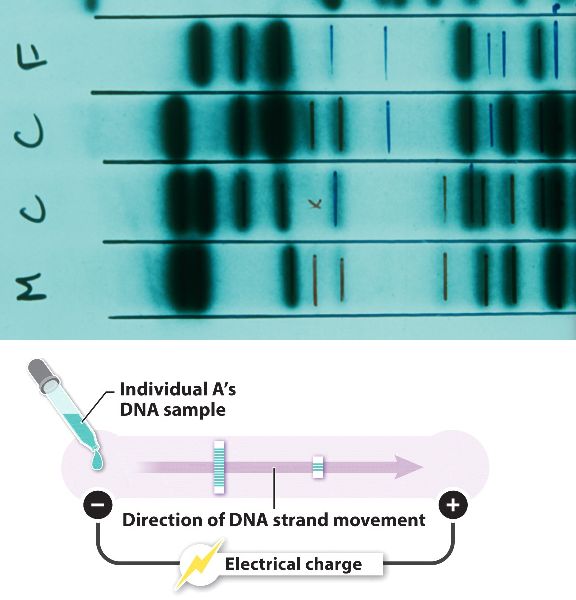 Electrophoresis
Electrophoresis
DNA samples are cut into fragments by restriction enzymes.
The fragments are placed in a semifluid gel apparatus and an electrical charge is applied.
The negatively charged DNA fragments move toward the positive end
at different speeds, based mainly on fragment size.
The separated fragments can be visualized with dyes.
 Genomics and biotechnology
Genomics and biotechnology 
 Genomics and biotechnology
Genomics and biotechnology 